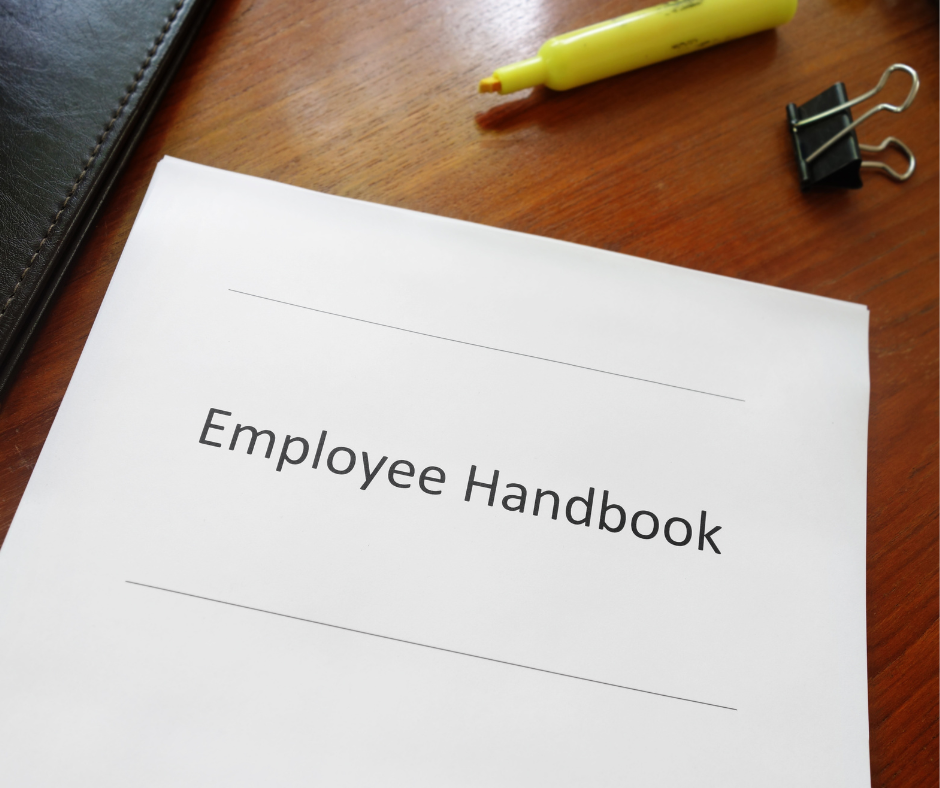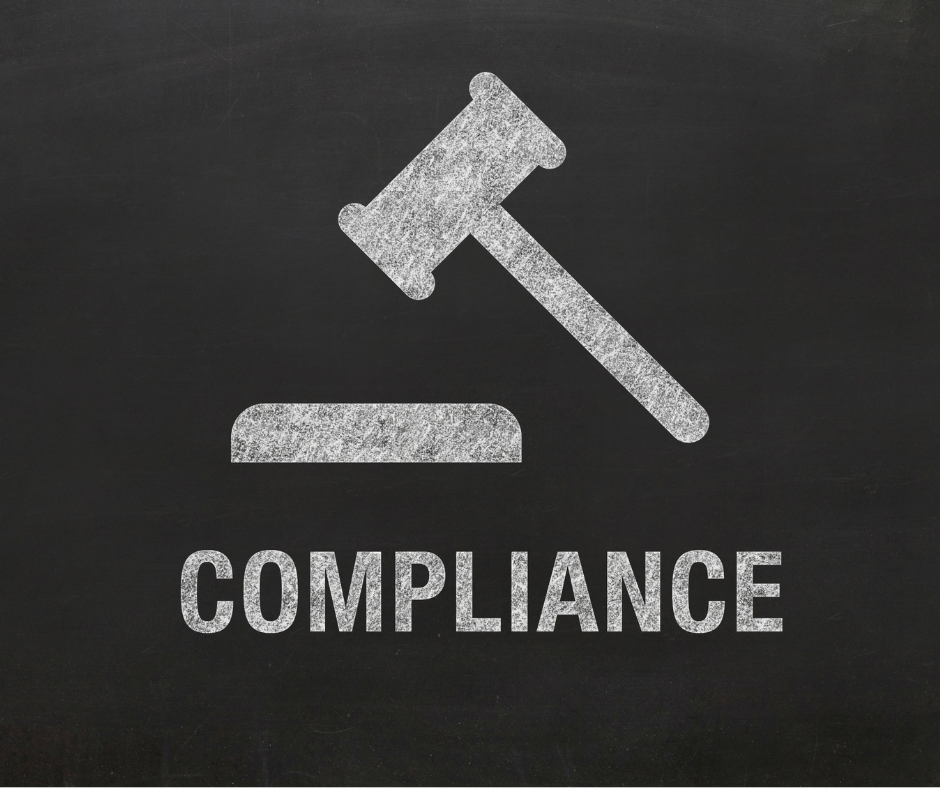
The State of Arizona Employee Handbook serves as a comprehensive guide for employees, outlining the policies, procedures, and expectations of the organization. This handbook provides essential information to ensure legal compliance and a respectful and inclusive work environment for all employees.
Covering a wide range of topics, the handbook starts with an introduction to familiarize employees with its purpose and scope. It then delves into legal compliance and policies, including equal employment opportunity, anti-discrimination and harassment, code of conduct, confidentiality and privacy, and workplace safety.
The next section focuses on employment and benefits, providing information on employment categories and classifications, compensation and payroll, leave and absence policies, as well as health insurance and other benefits available to employees.
The handbook details workplace policies, such as attendance and punctuality, dress code and personal appearance, use of company property and resources, and guidelines for electronic communication and social media usage. It also outlines disciplinary actions and grievance procedures to address any misconduct or conflicts that may arise.
Lastly, the handbook covers workplace expectations and professional development opportunities, including performance expectations, training and development programs, and avenues for promotion and advancement within the organization.
By providing employees with this comprehensive resource, the State of Arizona aims to create a productive, inclusive, and harmonious work environment where employees can thrive and contribute to the organization’s success.

Legal Compliance and Policies
Legal Compliance and Policies in the State of Arizona Employee Handbook ensures a fair and inclusive work environment. From Equal Employment Opportunity to Workplace Safety, this section covers various policies. Explore how these policies, in line with the burger king employee handbook, safeguard employee rights, prevent discrimination and harassment, uphold a strong code of conduct, and ensure confidentiality and privacy. With a commitment to upholding the law and promoting a harmonious workplace, these policies lay the foundation for a productive and respectful work culture.
Equal Employment Opportunity
Equal Employment Opportunity is crucial in ensuring fair treatment and opportunities for all employees. The State of Arizona Employee Handbook outlines important policies and guidelines to achieve this goal.
1. Non-discrimination: Create an inclusive and diverse work environment where employees are not discriminated against based on factors such as race, gender, age, or disability. Treat all employees fairly and with respect.
2. Hiring practices: Select candidates based on qualifications and abilities rather than personal characteristics.
3. Training and development: Provide opportunities for employees to enhance their skills and abilities, ensuring equal chances for career growth and advancement.
4. Accommodation for disabilities: Make reasonable accommodations for employees with disabilities to enable effective job performance. This may include physical modifications, assistive devices, or adjustments to work schedules.
5. Reporting and addressing concerns: Promptly report any instances of discrimination or witness to it. The State of Arizona has policies and procedures in place to investigate and handle such concerns.
By adhering to these policies, the State of Arizona promotes equal opportunities for all employees, creating a positive and inclusive work environment. This not only benefits individuals but also contributes to a more productive and harmonious workplace overall.
Anti-Discrimination and Harassment
Anti-discrimination and harassment in the workplace are serious issues that must be addressed. Employers should establish clear and explicit policies that strictly prohibit discrimination and harassment based on factors such as race, gender, age, religion, sexual orientation, or disability. These policies should be communicated to all employees and consistently enforced.
Employers must provide proper training on anti-discrimination and harassment policies to all employees. Training should cover what constitutes discriminatory behavior or harassment, how to report incidents, and the consequences for violating the policies.
Employers should create a safe and confidential reporting mechanism for employees to report incidents of discrimination or harassment. Employees should feel comfortable coming forward without fear of retaliation.
Any reports or complaints of discrimination or harassment should be promptly and thoroughly investigated. The investigation process should be fair, impartial, and objective. Appropriate disciplinary action should be taken if allegations are substantiated.
Employers should provide support and resources to employees who have experienced discrimination or harassment. This may include counseling services, legal assistance, or protection from retaliation.
Regular reviews of policies and procedures should be conducted to ensure they remain effective in addressing evolving discrimination and harassment issues.
By actively addressing anti-discrimination and harassment, employers can create a positive and inclusive workplace that promotes equality, respect, and well-being for all employees.
Code of Conduct
The Code of Conduct is an essential part of the State of Arizona Employee Handbook. It provides guidelines and expectations for employees’ behavior. Here are some key points:
1. Professionalism: Maintain professionalism in all interactions. Use respectful language, show courtesy, and consider others’ opinions.
2. Ethical behavior: Act with integrity and honesty. Avoid conflicts of interest, protect confidential information, and follow ethical standards.
3. Compliance with laws and regulations: Familiarize yourself with and follow all applicable laws, regulations, and policies, including anti-discrimination laws, data protection regulations, and safety regulations.
4. Workplace respect: Promote a respectful and inclusive work environment. Treat each other with dignity, respect differences, and avoid harassment, discrimination, or bullying.
5. Reporting misconduct: Promptly report any violations of the Code of Conduct to the appropriate authority. Whistleblower protections are in place to prevent retaliation.
Pro-tip: Thoroughly familiarize yourself with the Code of Conduct and regularly review for any changes. Understanding and adhering to it promotes a positive work environment and protects the organization’s reputation.
Confidentiality and Privacy
In the workplace, adherence to confidentiality and privacy policies and practices is crucial. Here are some important considerations:
- Employee Responsibility: All employees should understand and respect maintaining confidential information and respecting privacy. This responsibility extends to physical and digital materials.
- Confidential Information: Employees should know what constitutes confidential information within the organization, such as trade secrets, financial data, customer information, and other sensitive material.
- Secure Storage: Confidential information should be stored securely, whether physical documents or digital files. Lockable cabinets, password-protected systems, and restricted access areas can help ensure authorized personnel only have access.
- Data Protection: Employees must be diligent in protecting digital data, including personal and organizational information. This includes using strong passwords, not sharing login credentials, being cautious with email attachments, and following proper data handling procedures.
- Non-Disclosure Agreements: In some cases, employees may need to sign non-disclosure agreements (NDAs) that legally require them to maintain confidentiality. It’s important to understand the terms and obligations stated in these agreements.
Maintaining confidentiality and privacy helps protect individuals, organizations, and the trust they have built with clients and stakeholders.
Fact: According to a survey conducted by Salary.com, 82% of employees agreed that maintaining confidentiality is important in their workplace.
Workplace Safety
Workplace safety is of utmost importance to ensure the well-being and security of employees. The State of Arizona Employee Handbook provides comprehensive guidelines and policies to maintain a safe work environment. These include strict adherence to safety protocols, such as the proper use of equipment, wearing protective gear, and prompt reporting of hazardous situations or incidents.
For employee handbook examples that prioritize safety, the State of Arizona’s guidelines serve as an excellent model to follow, emphasizing the significance of creating a secure workplace for all staff members.
To equip employees with the necessary knowledge and skills for handling emergencies, the State of Arizona conducts regular safety training sessions. These sessions cover important topics like fire safety, evacuation procedures, and first aid.
Keeping a clean and organized workspace is crucial to minimizing accident risks. Employees are expected to maintain their work areas in an organized manner to prevent tripping or falling incidents.
In the event of any safety concerns or hazards, employees should immediately report them to their supervisor or the appropriate department. This proactive reporting allows for prompt corrective actions to prevent accidents or injuries.
It is important to note that workplace injuries in the United States result in significant financial costs. According to the Occupational Safety and Health Administration (OSHA), employers bear a financial burden of over $1 billion per week due to workplace injuries.
Ensuring workplace safety is not only a legal requirement but also a moral imperative, as it safeguards the well-being and security of all employees. By following the guidelines and policies outlined in the State of Arizona Employee Handbook, we can create a safe and secure working environment for everyone.

Employment and Benefits
In the thrilling world of Arizona employment, we dive into the section that delves deep into the ins and outs of Employment and Benefits. From the various employment categories and classifications to compensation and payroll details, leave and absence policies, and the perks of health insurance and other benefits. Get ready to explore a wealth of information that will enlighten you on all things related to the intricacies of working in the majestic state of Arizona!
Employment Categories and Classifications
The State of Arizona Employee Handbook provides a comprehensive overview of employment categories and classifications. It is crucial for employees and employers to understand these categories and classifications as they determine eligibility for benefits and set employment expectations. Let’s dive deeper into each category:
– Full-Time: This category is for employees who work a standard 40-hour week and are entitled to all state benefits.
– Part-Time: Employees in this category work less than a standard 40-hour week. The eligibility for benefits may vary based on the number of hours worked.
– Temporary: This category applies to employees who are hired for a specific project or fixed duration. They do not receive benefits, and their employment is not permanent.
– Contractual: Employees in this category are hired through a contract or agreement for a specific period or project. Benefits may be provided based on the terms stated in the contract.
– Probationary: This category is for new employees who are in a trial period to assess their suitability for a permanent position. Limited benefits may apply during this probationary period.
Understanding these employment categories and classifications is essential for both employees and employers. It helps employees understand their rights and responsibilities based on their category. For employers, it ensures transparency and compliance with employment laws as they communicate the classification and its implications to their employees.
Establishing employment categories and classifications also aids in maintaining a fair and organized workforce. It provides a framework for managing employee rights, benefits, and responsibilities, ultimately promoting a harmonious work environment for all.
Compensation and Payroll
When it comes to compensation and payroll, the State of Arizona Employee Handbook provides guidelines and policies to ensure fair and accurate payment for employees.
1. Salary Determination
The handbook outlines the process for determining employee salaries based on job classification, experience, and performance. This ensures employees are compensated appropriately.
2. Payroll Schedule
The handbook specifies the payroll schedule, indicating the frequency and timing of salary payments. This provides employees with clear expectations for receiving their compensation.
3. Overtime and Extra Compensation
Employees are informed about policies regarding overtime and extra compensation for working beyond regular hours or taking on additional responsibilities. This ensures fair compensation for extra efforts.
4. Deductions
The handbook details deductions that may be made from an employee’s salary, such as taxes or benefits contributions. It ensures transparency and accuracy in the payroll process.
5. Direct Deposit
The handbook provides information on the option of direct deposit, allowing employees to have their salaries deposited directly into their bank accounts. This offers convenience and security.
These policies and guidelines regarding compensation and payroll ensure fair and accurate remuneration for employees in the State of Arizona. They promote a positive and transparent work environment.
Leave and Absence Policies
When it comes to leave and absence policies, the State of Arizona Employee Handbook has clear guidelines and regulations. Here are some key points to consider:
– Types of leave: The handbook outlines various types of leave available to employees, including annual leave, sick leave, bereavement leave, and parental leave. These policies provide time off for personal and family-related reasons.
– Accrual and usage: Employees accrue leave based on their length of service and employment category. Specific details regarding accrual rates, carryover limits, and maximum usage per year are outlined.
– Leave request process: The handbook provides instructions on how to request leave, including the preferred method of submission and the required time frame. It emphasizes timely communication and coordination with supervisors or managers.
– Medical documentation: In certain situations, employees may need to provide medical documentation to support their leave requests. The handbook specifies the necessary procedures and confidentiality measures to ensure privacy.
– Family and medical leave: The handbook outlines the provisions and requirements of the Family and Medical Leave Act (FMLA). It ensures that employees understand their rights and responsibilities.
– Attendance policies: The handbook covers attendance policies to ensure that employees maintain regular attendance and do not abuse leave privileges. It highlights the importance of regular communication and timely reporting of any absences.
By following these leave and absence policies, employees can effectively manage their time off while adhering to the rules and regulations set forth by the State of Arizona Employee Handbook.
Health Insurance and Other Benefits
Health insurance and other benefits provided by the State of Arizona are designed to promote employee well-being and offer financial security. The State of Arizona provides comprehensive health insurance plans that encompass medical, dental, and vision expenses. These plans grant individuals and families access to a wide network of healthcare providers and offer various options to suit their needs.
In terms of retirement planning, employees can choose to participate in either the Arizona State Retirement System (ASRS) or the Public Safety Personnel Retirement System (PSPRS). These retirement plans ensure a secure financial future for employees after they retire.
Furthermore, the State of Arizona offers flexible spending accounts (FSAs) to assist employees in saving money for healthcare and dependent care expenses. Through FSAs, employees can allocate pre-tax dollars for eligible expenses.
To provide protection from unforeseen circumstances, employees can enroll in life and disability insurance plans. These policies safeguard both employees and their families in the event of unexpected illness, injury, or death.
Additionally, employee assistance programs (EAPs) are available to provide confidential counseling services, stress management resources, and assistance with personal issues. These programs are designed to support employees in their professional and personal lives.
It is important for employees to carefully review the details of each benefit and consider their individual needs. By taking advantage of the comprehensive range of offerings, employees can enhance their overall well-being and guarantee financial security.
Did you know that over 80% of Arizona State employees actively participate in the health insurance program? This significant participation rate demonstrates the value of the benefits and coverage options available to employees.

Workplace Policies
Discover the ins and outs of workplace policies in the State of Arizona Employee Handbook. From attendance and punctuality to dress code and personal appearance, we’ll dive into the dos and don’ts that shape the professional environment. We’ll also explore the use of company property and resources, as well as the dos and don’ts of electronic communication and social media. Lastly, we’ll shed light on disciplinary actions and grievance procedures to ensure you stay informed and empowered in the workplace.
Attendance and Punctuality
Employees must prioritize attendance and punctuality by following guidelines and policies. It is crucial to arrive on time for a smooth start to the workday and to avoid disruptions for colleagues. If you anticipate being late or unable to attend work, inform your supervisor or appropriate department in advance.
In alignment with the In-N-Out Employee Handbook, also make sure to properly clock in and out or document attendance according to the company’s tracking system.
Consistent absence or lateness negatively impacts productivity and workplace functioning, so it is important to minimize unplanned absences. When requesting time off, be sure to follow company procedures. Furthermore, staying engaged throughout the workday is essential in maintaining productivity and meeting job expectations.
Remember to be punctual for meetings and appointments. Arriving on time demonstrates respect for others’ time and promotes effective collaboration. Consistent attendance and punctuality contribute to a positive work environment and showcase professionalism and dedication.
Dress Code and Personal Appearance
The State of Arizona Employee Handbook has specific policies and guidelines for dress code and personal appearance. Employees must adhere to these policies to maintain a professional and appropriate appearance in the workplace.
- Attire: Employees must dress professionally and wear clean and neat clothing suitable for their roles.
- Grooming: Employees should maintain good personal hygiene and present themselves in a well-groomed manner, including proper grooming of hair, nails, and facial hair.
- Jewelry and Accessories: Avoid excessive or distracting jewelry and accessories, keeping them to a minimum for a professional appearance.
- Tattoos and Piercings: Keep visible tattoos and piercings minimal and non-excessive. Cover up offensive or inappropriate tattoos, and avoid excessive facial piercings.
- Uniforms: If required to wear a uniform, employees must wear it properly and keep it clean and presentable.
- Footwear: Wear appropriate and comfortable footwear suitable for the job, avoiding open-toed shoes or sandals in roles that require safety precautions.
- Personal Expression: Respect the dress code guidelines while still being able to express personal style.
These guidelines aim to maintain a professional and respectful work environment. Failure to comply may result in disciplinary actions. Employees should familiarize themselves with these guidelines and consistently adhere to them to project a professional image to clients and colleagues.
Use of Company Property and Resources
When utilizing company property and resources, it is important to adhere to the guidelines and policies in order to maintain a productive work environment. Please consider the following points:
1. Purpose: Ensure that company property and resources are utilized solely for work-related tasks.
2. Confidentiality: Treat any information accessed through company resources with the utmost confidentiality.
3. Respect Boundaries: Use company property and resources in a manner that respects the rights and privacy of others.
4. Policy Compliance: Familiarize yourself with the specific policies and guidelines pertaining to internet and email usage, software licensing, and data storage.
5. Reporting Issues: If there are any technical issues or instances of misuse of company resources, promptly report them to the appropriate department or supervisor.
Pro-tip: Utilizing company property and resources responsibly contributes to a harmonious work environment and upholds the reputation and interests of the organization.
Electronic Communication and Social Media
The State of Arizona Employee Handbook contains policies and guidelines for using electronic communication and social media in the workplace. These policies promote professionalism, protect company information, and maintain a respectful work environment.
1. Proper Use: Employees should use electronic communication and social media responsibly, aligning with company values. This means not sharing confidential or sensitive information, using derogatory or discriminatory language, or posting content that could harm the company’s reputation.
2. Privacy and Security: Electronic communication and social media platforms are not completely secure. Employees should be cautious when sharing personal information and use company-approved and secure channels for work-related communication.
3. Company Property: Company-issued devices and accounts should only be used for work purposes. Personal use and activities that interfere with job responsibilities are not allowed.
4. Professionalism: Employees should maintain a professional image on social media. This includes not engaging in negative conversations about colleagues or the company, avoiding discussions about confidential information, and being respectful and considerate online.
5. Monitoring and Consequences: The company can monitor electronic communications and social media activities to ensure policy compliance. Violations can result in disciplinary actions, such as warnings, suspension, or termination.
Employees must familiarize themselves with these policies and understand their implications. By following these guidelines, employees can contribute to a positive work environment while effectively using electronic communication and social media.
In recent years, electronic communication and social media have transformed the way we interact and communicate. Platforms such as email, instant messaging, and social networking sites have become increasingly popular, leading organizations to establish policies governing their use in the workplace.
These policies address concerns regarding privacy, security, and maintaining a professional image. They aim to balance efficient communication with the protection of sensitive information.
Implementing these policies helps companies mitigate risks associated with electronic communication and social media, such as data breaches, reputation damage, and legal issues. It also promotes a cohesive and respectful work environment, preventing misuse or abuse of these platforms.
As technology evolves, policies surrounding electronic communication and social media will continue to change. Employees and employers must stay informed and adapt to the digital landscape, ensuring a harmonious and secure work environment for all.
Disciplinary Actions and Grievance Procedures
When it comes to disciplinary actions and grievance procedures, the State of Arizona Employee Handbook provides clear guidelines for fair and consistent treatment of employees.
Additionally, the handbook outlines procedures to follow if an employee has a complaint or dispute with a colleague or manager. These grievance procedures encourage employees to first discuss the matter with their immediate supervisor. If the issue remains unresolved, the employee may escalate the grievance to the next level of management. The handbook provides a clear process for filing the grievance and steps for investigating and addressing the complaint.
Emphasizing the importance of fairness and due process, the handbook ensures that employees have the right to be heard, present their side of the story, and have their concerns addressed promptly. This commitment to fairness and due process ensures that employees are not subjected to arbitrary or unfair treatment.
In terms of confidentiality, the handbook maintains privacy throughout disciplinary actions and grievance procedures. Any information shared during the process should only be disclosed to those directly involved and those with a legitimate need to know. This safeguards the rights of both the complainant and the accused.
Moreover, the handbook emphasizes the significance of documentation. It stresses the importance of keeping records of all disciplinary actions and grievance procedures, including issue details, steps taken to address it, and any resolutions or outcomes. Proper documentation ensures consistency, transparency, and accountability.
By following the disciplinary actions and grievance procedures outlined in the State of Arizona Employee Handbook, the organization strives to maintain a fair and respectful work environment for all employees.

Workplace Expectations and Professional Development
In the workplace, it’s crucial to hit the mark when it comes to meeting expectations and fostering professional growth. In this section, we dive into the realm of Workplace Expectations and Professional Development. Get ready to explore Performance Expectations, Training and Development Opportunities, and the road to Promotion and Advancement. Brace yourself for insights that will help you navigate your career path with confidence and aim for greater success.
Performance Expectations
Performance Expectations are important in the State of Arizona Employee Handbook. These expectations outline the standards and goals for employees to perform their jobs effectively. Here are the steps to understand and meet performance expectations:
1. Review Job Description: Familiarize yourself with your job’s duties and responsibilities.
2. Set Goals: Collaborate with your supervisor to set specific and measurable performance goals that align with department or organization objectives.
3. Provide Regular Feedback: Engage in performance discussions with your supervisor to receive constructive feedback and identify areas for improvement.
4. Develop Action Plans: Use feedback to create action plans for areas that need improvement, such as training, mentorship, or acquiring new skills.
5. Monitor Progress: Continuously assess your progress towards goals and make necessary adjustments.
6. Seek Development Opportunities: Take advantage of training opportunities to enhance your skills and perform at a higher level.
7. Document Achievements: Maintain a record of accomplishments for performance evaluations and future promotions or advancement.
8. Ask for Help: Don’t hesitate to seek guidance from supervisors or colleagues if you need assistance in meeting expectations.
9. Regularly Self-Assess: Reflect on your performance and identify areas for improvement to enhance your performance proactively.
By following these steps, you can ensure that you understand and meet the performance expectations in the State of Arizona Employee Handbook, setting yourself up for success in your role.
Training and Development Opportunities
Training and development opportunities are highlighted in the State of Arizona Employee Handbook, emphasizing how they can enhance skills, knowledge, and career growth for employees.
These opportunities include on-the-job training, where employees have the chance to acquire new skills and improve existing ones while carrying out their regular job duties.
Additionally, professional workshops and seminars are available, giving employees the opportunity to learn from subject matter experts on various topics related to their professional development.
Online training courses are also provided, offering a flexible learning experience with a wide selection of courses on different subjects.
For those aspiring to leadership roles, there are leadership development programs in place that aim to cultivate leadership skills and prepare individuals for increased responsibilities.
Moreover, career mentoring programs are actively encouraged, with experienced professionals offering guidance and support to employees on their career development journey.
All employees are strongly encouraged to make the most of these training and development opportunities as they not only aid in their professional growth but also contribute positively to the overall organization.
Promotion and Advancement
When it comes to workplace promotion and advancement, the State of Arizona Employee Handbook provides a guide for understanding the necessary steps and requirements. Important points to consider include:
- Performance and Merit: Promotion and advancement depend on an employee’s demonstrated performance and merit. Consistently meeting or exceeding expectations is crucial.
- Skills and Qualifications: Developing and enhancing skills and qualifications is key to being considered for promotion. Actively seek out training and development opportunities within the organization.
- Internal Hiring: The State of Arizona encourages internal hiring by giving preference to current employees who meet qualifications for higher-level positions. This allows employees to grow and advance within the organization.
- Competitive Selection Process: Higher-level positions may require a competitive selection process, including interviews, assessments, and evaluations. Participating in these processes can increase chances of promotion.
- Proactive Approach: Promote your own skills and achievements by documenting and communicating them to supervisors and managers regularly.
It’s important to understand that promotion and advancement are not guaranteed. They depend on factors like organizational needs, available positions, and overall employee performance. However, consistently demonstrating skills, qualifications, and commitment to personal growth can increase chances of promotion.
Sarah, an employee with the State of Arizona, worked diligently, consistently meeting and exceeding expectations while actively seeking opportunities to enhance her skills. When a higher-level position became available, Sarah was well-prepared and confident. She applied, performed well in the interview, and ultimately received the promotion she had been working towards. Sarah’s story shows that hard work, dedication, and continuous self-improvement can lead to valuable promotion and advancement opportunities.
The handbook outlines steps that may be taken in response to employee misconduct or performance issues. These disciplinary actions may include verbal or written warnings, suspension, or termination. The purpose of disciplinary actions is to address and rectify behavior or performance concerns.
Frequently Asked Questions
1. What document type should an Arizona employee handbook be?
The document type should an Arizona employee handbook will be in the form of a written document.
2. Are federal laws included in the Arizona employee handbook?
Yes, federal laws that are required in all 50 states should be included in the Arizona employee handbook.
3. What are some best practices for creating an Arizona employee handbook?
Some best practices for creating an Arizona employee handbook include including both state and federal policies, evaluating the current company culture, setting goals for improvement, and respecting employees’ work-life balance.
4. Can you provide a resource link for an Arizona employee handbook?
Yes, you can find a resource link for an Arizona employee handbook at: [insert resource link]
5. How does company culture impact employee happiness and recruitment?
Company culture has a significant impact on employee happiness and can also influence recruitment. A strong company culture can attract candidates who align with the company’s values, leading to higher employee satisfaction and lower turnover rates.
6. Are there any city-specific policies that should be included in an Arizona employee handbook?
Yes, depending on the location of the business, there may be city-specific policies that need to be included in the Arizona employee handbook to ensure compliance with local regulations.